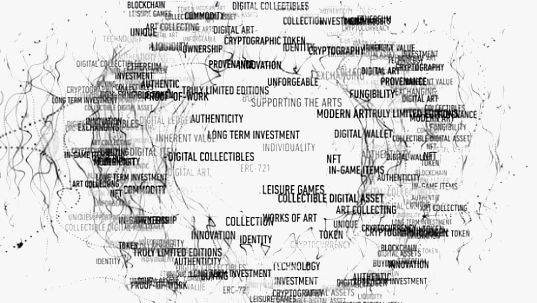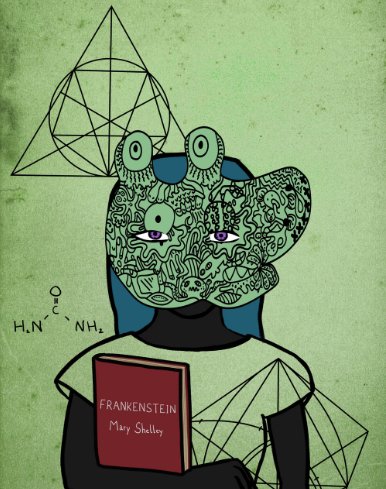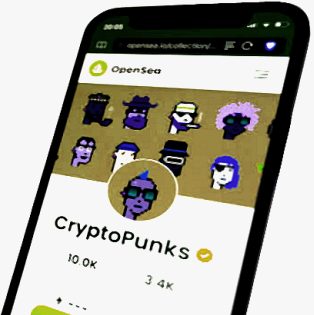Accredited InvestorsAltcoinAnatoli UnitskyAnti-Money Laundering (AML) In CryptoAPIArbitrageArtCoin TokenArticle DirectoryASICAuction Terminology GlossaryBasics of Stock Market InvestingBear MarketBest Crypto Payment Provider In the WorldBitcoinBlockchainBlockchain ConfirmationBlockchain Consensus MechanismBlockchain ForkBlockchain GlossaryBored Ape Yacht ClubBuild a Business That OutperformsBull MarketBuying SkyWay SharesByzantine Fault Tolerance (BFT) ExplainedCasascius CoinCentral Bank Digital Currency (CBDC)Centralized Crypto ExchangeCoinCoinsetCold WalletCollateralCommodity Futures Trading Commission (CFTC)Cross-Chain TechnologyCRUCrypto ExchangeCrypto GlossaryCrypto JokesCrypto Terms to KnowCrypto TickerCryptocurrencyCryptographyCryptojackingCryptounit BlockchainCryptounit GlossaryCryptounit ProgramdApp (Decentralized Application)Dead CoinDecentralized Exchange (DEX)Decentralized Finance (DeFi)Difference Between Bitcoin and EthereumDifferent Ways of Investing MoneyDigital CurrencyDistributed LedgerDo Your Own Research (DYOR)Dollar Cost Averaging (DCA)Dow Jones Industrial Average (DJIA)EncryptionERC-20ERC-721EthereumEvoScentFear Of Missing Out (FOMO)Fear, Uncertainty and Doubt (FUD)Fiat MoneyFNT Fintech CompanyGenesis BlockGlobal Unit PayGlossary of Banking TermsGlossary of Business TermsGlossary of Financial TermsHalvingHODLHot WalletHow Do I Start InvestingHow Rich is Satoshi Nakamoto?How to Create a BlockchainHow to Find Private InvestorsHow to Get Into FintechHow to Program Smart ContractsI Am Thrilled to Be a Part of This Global ProjectInitial Coin Offering (ICO)Initial Public Offering (IPO)Initial Token Offering (ITO)Innovation Basalt TechnologyInnovative Transportation TechnologiesInternational Bank Account Number (IBAN)Investing in Gold Mining StocksInvesting in Gold MiningJagerJoy of Missing Out (JOMO)Know Your Customer (KYC)LedgerLiquidity in CryptocurrencyMaker and Taker Fees in Crypto TradingMarket Capitalization (Market Cap)Meme CoinMetal Credit CardMetaMaskMillenials Now Have Access to Generational WealthMy Best Investment EverNew Digital EvolutionNFT GlossaryOff-Chain TransactionsOn-Chain TransactionsOpen Edition NFTPeer-to-Peer (P2P)Personal Loan GlossaryProbably the Best STO on the MarketProof of Stake (PoS)Real Estate Glossary of TermsReal Estate Investing GlossaryRebase TokenSecurities and Exchange Commission (SEC)Security Token ExchangesSecurity Token Offering (STO)Soulbound Decentralized Identities for Security TokensSoulbound ID Launch by Stobox Proves a SuccessSoulbound TokensStoboxStock Market GlossaryTestimonialsTether Platform and Token (USDT)UnitEx ExchangeUnitsky String TechnologiesUNTBUSDUValidatorWe Started Investing When We Were 25What are Blue Chip NFT?What are Blue Chip Stocks?What are Crypto Assets?What are Crypto Smart Contracts?What are CryptoPunks NFT?What are Digital Assets?What are Digital Collectibles?What are Gas Fees?What are Gas Wars?What are Hashmasks?What are Non Fungible Tokens?What are Non-Sufficient Funds (NSF)?What are Soulbound Tokens (SBT)?What are Stablecoins in Crypto?What are Transactions Per Second (TPS)?What are Utility NFTs?What are Utility Tokens?What Does Burning Crypto Mean?What Does Diamond Hands Mean?What Does Paper Hands Mean?What Does To The Moon Mean?What Does WAGMI Mean?What Happened to Satoshi Nakamoto?What is a 51% Attack?What is a Baby Boomer?What is a Backlink?What is a Banner?What is a Barcode?What is a Bid-Ask Spread in Crypto?What is a Block in Blockchain?What is a Block Reward?What is a Blockchain Address?What is a Blockchain Node?What is a Blockchain Oracle?What is a Blog?What is a Bond?What is a Bot?What is a Broker?What is a Business Accelerator?What is a Cash Cow?What is a Commercial Bank?What is a Commodity?What is a Con?What is a Credit?What is a Credit Limit?What is a Credit Rating?What is a Crypto Airdrop?What is a Crypto Bridge?What is a Crypto Scam?What is a Crypto Token?What is a Crypto Wallet?What is a Crypto Whale?What is a Crypto Winter?What is a Cryptocurrency Public Ledger?What is a Cryptocurrency Roadmap?What is a DAO?What is a Dark Pool?What is a Day Trader?What is a Dead Cat Bounce?What is a Default?What is a Derivative?What is a Digital Credit Card?What is a Fiscal Quarter?What is a Fungible Token?What is a Governance Token?What is a Grace Period?What is a Hard Fork?What is a Hot Wallet?What is a Hybrid Blockchain?What is a Hybrid PoW/PoS?What is a Joint Account?What is a Market Cap?What is a Merkle Tree in Blockchain?What is a Mining Farm?What is a Nonce? What is a PFP NFT?What is a POS System?What is a Prepaid Card?What is a Private Blockchain?What is a Private Key?What is a Public Blockchain?What is a Public Key?What is a Reserve Currency?What is a Ring Signature?What is a Routing Number?What is a Rug Pull in Crypto?What is a Safe Deposit Box?What is a Satoshi?What is a Security Token?What is a Seed Phrase?What is a Shitcoin?What is a Sidechain?What is a Soft Fork?What is a Spot Market?What is a State Bank?What is a SWIFT Code?What is a Tax Identification Number (TIN)?What is a Time Deposit?What is a Transaction Account?What is a Variable Interest Rate?What is a Virtual Assistant (VA)?What is a Virtual Card?What is a Virtual Currency?What is a Visa Card?What is a Whitelist in Crypto?What is a Whitepaper?What is Accounts Payable (AP)?What is AMA in Crypto?What is Amortization?What is an Accrual?What is an ACH Transfer?What is an Actuary?What is an Addendum?What is an Algorithm?What is an Angel Investor?What is an Annuity?What is an Asset?What is an ATM?What is an Atomic Swap?What is an Audit?What is an Avatar?What is an EIN?What is an Embargo?What is an Entrepreneur?What is an IDO (Initial Dex Offering)?What is an Interest Rate?What is an Internet cookie?What is an Investment Bank?What is an NFT Drop?What is an NFT Floor Price?What is an Ommer Block?What is an Orphan Block?What is an Outstanding Check?What is an Overdraft?What is Artificial Intelligence (AI)?What is B2B (Business-to-Business)?What is B2G (Business-to-Government)?What is Bartering?What is Bitcoin Dominance?What is Bitcoin Pizza Day?What is Blockchain Immutability?What is Blockchain Used For?What is BRICS?What is Business-to-Consumer (B2C)?What is C2C (Customer to Customer)?What is Capitalism?What is Catfishing?What is CFD Trading?What is Check Kiting?What is Cloud Mining?What is Communism?What is Content Marketing?What is Decentralization in Blockchain?What is DeFi in Crypto?What is Delisting?What is Depreciation?What is Digital Marketing?What is Diversification?What is Double Spending?What is Dumb Money?What is Dumping?What is Earnings Per Share (EPS)?What is Economics?What is Email Marketing?What is Equity?What is Etherscan?What is Fintech?What is Foreign currency?What is Forex?What is Fundamental Analysis (FA)?What is GameFi?What is Generative Art NFT?What is Gwei?What is Hard Currency?What is Hash Rate?What is Hashing in Blockchain?What is Inflation?What is Initial Game Offering (IGO)?What is Interest?What is Interest Income?What is Mainnet?What is Mastercard?What is Metaverse in Crypto?What is Mining in Cryptocurrency?What is Minting NFT?What is Mobile Banking?What is Money Laundering?What is NFT Alpha?What is NFT Metadata?What is NFT Rarity?What is NGMI Meaning?What is Nominal Interest Rate?What is Online Banking?What is Open-End Credit?What is OpenSea NFT Marketplace?What is Personal Identification Number (PIN)?What is Play-to-Earn?What is Polygon?What is Proof of Authority (PoA)?What is Proof of Work (PoW)?What is Public Key Cryptography?What is Pump and Dump?What is Quantum Computing?What is Refinancing?What is Retail Banking?What is Ripple?What is Sharding?What is Slippage in Crypto?What is Smart Money?What is Solvency?What is Soulbound ID?What is SSL?What is Staking in Cryptocurrency?What is Technical Analysis (TA)?What is Testnet?What is the Ask Price?What is the Better Business Bureau (BBB)?What is the Bid Price?What is the Dark Web?What is the InterPlanetary File System (IPFS)?What is the Gold Standard?What is the Lightning Network?What is the Prime Rate?What is the Sandbox?What is the Secondary Market?What is the World Bank?What is Tier 1 Capital?What is Tokenomics?What is TRC-20?What is Universal Banking?What is Unspent Transaction Output (UTXO)?What is Usury?What is Volatility in Crypto?What is Wash Trading?What is Web3?What is Whisper?What is XRP?What is Zero-Knowledge Proof (ZKP)?Who is Beeple?Who is Satoshi Nakamoto?Who is Vitalik Buterin?Why Tokenization is a Safe HavenWhy You Should Try Your Hand at Trading
What are Digital Collectibles?
- Home
- NFT Glossary
- What are Digital Collectibles?
If you're a passionate tech enthusiast, collector, or investor, you're probably familiar with digital collectibles and NFTs.

Although both of them operate in the digital world, it's important to note that a digital collectible is not precisely the same as an NFT.
What are Digital Collectibles?
Essentially, a digital collectible is a unique or limited-edition version of a virtual item. Typically, digital collectibles feature a visual element, such as digital trading cards, video clips, or digital art.
The collectibles market experienced a significant surge during the pandemic, as people looked for new interests or sought nostalgia while being confined indoors. Concurrently, cryptocurrency was becoming increasingly mainstream. As a result, many businesses attempted to capitalize on both trends by utilizing blockchain technology to create digital collectibles. This movement led to a massive boom in non-fungible tokens (NFTs), allowing virtual products to become exclusive digital collectibles with limited availability.
Digital collectibles leverage blockchain technology to mint NFTs, enabling transfers in ownership and distribution rather than creating duplicates. This enables owners to transfer ownership of their digital collectibles to others while maintaining an immutable record. Collectors can thus ensure the rarity of their investments while also setting terms for usage and ownership.
Understanding the Difference Between Digital Collectibles and NFTs
Many people tend to assume that NFTs and digital collectibles are the same thing. However, it's essential to understand that a digital collectible is only one aspect of what you acquire when purchasing an NFT.
When you purchase an NFT, you receive a digital collectible, which is essentially the digital asset itself, such as a music piece, photo, video clip of a sports highlight, digital artwork, or a trading card. The exciting aspect of digital collectibles is their versatility, which means that they can be almost anything.
However, the value of an NFT lies in the certificate of ownership. Without it, there is no proof of ownership, which diminishes the value to nothing. The certificate of ownership, which is the NFT itself, is what makes an NFT unique. The non-fungible token serves as a digital proof of ownership, ensuring that your digital file is truly ownable and, therefore, a digital collectible.
The Advantages of Investing in Digital Collectibles
If you're curious about digital collectibles and why they're in high demand, let's dive into their benefits. Owning digital assets can provide you with:
Proof of ownership and authenticity: With the use of blockchain technology, digital collectibles can be owned and verified for authenticity. The NFT serves as a digital proof of ownership, making your digital file a unique and valuable collectible.
Uniqueness and scarcity: The scarcity of digital collectibles makes them more valuable to collectors. Smart contracts can be used to guarantee a maximum supply of assets in the digital world, which ensures that the issuance limits set by creators cannot be exceeded.
Provenance: The origin of an item can significantly impact its value, and blockchain technology allows you to trace the provenance of your digital collectible. You can see the ownership transfers and trades of your collectible all the way back to its origin.
Security: Despite concerns about security, the transparency of the blockchain marketplace makes it a secure place to buy and sell digital collectibles. Blockchain explorers can easily prove whether a token was minted under the original creator's address or platform, ensuring peace of mind.
Utility: Digital collectibles can have a wide range of utility. They can operate in various apps and games, providing access to a community of other collectors, exclusive events, and other benefits.
These benefits only scratch the surface of what digital collectibles can offer. With the ability to carry your entire collection with you at all times and the potential for value recovery, investing in digital collectibles can be a wise decision for collectors and investors alike.
Understanding the Risks of Investing in Digital Collectibles
Investing in digital collectibles can be risky just like any other investment. It is essential to have a clear understanding of the risks involved before investing your money.
One of the risks associated with NFTs is the use of the InterPlanetary File System (IPFS). This protocol allows NFTs to remain permanent digital assets. However, the art and metadata are not stored on the blockchain but hosted externally on a server. Although proof of ownership is still verifiable on the blockchain, IPFS presents issues when it comes to using it as permanent storage. The storage needs to be physically hosted somewhere, and centralized failure points pose a significant risk.
Another risk is theft and loss. Hackers are becoming increasingly interested in NFT theft as it can be highly profitable. Therefore, it is crucial to follow safety guidelines to protect your investment. Storing your NFTs in a cold storage wallet can be a secure way to protect your digital assets.
Lastly, scams related to the NFT marketplace are also prevalent. When buying or selling NFTs, it is crucial to stick to reputable marketplaces and use advanced techniques to protect your digital assets.
Related Articles

ERC-721
One of the primary use cases for ERC-721 tokens is the creation of digital collectibles, such as artwork, gaming items, and virtual real estate. These collectibles can be...

What are Hashmasks?
Among the latest NFT projects is Hashmasks, which is redefining how we view digital art collectibles. These NFTs have gained immense popularity on OpenSea, perhaps because they...

What are CryptoPunks NFT?
This key allows them to buy, sell, and trade digital NFTs in the same way physical collectibles can be traded.
- Home
- NFT Glossary
- What are Digital Collectibles?